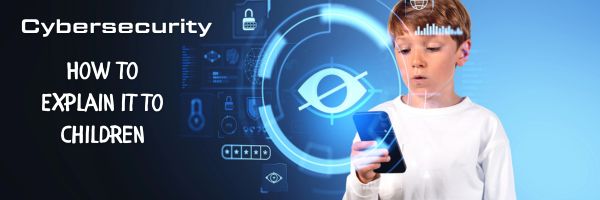It is important for children to know how to be safe while navigating the digital landscape. It’s easy when teachers present cybersecurity topics properly. Here are ideas from the Ask a Tech Teacher team:
How to Explain Cybersecurity for Children
Cybersecurity plays a crucial role in our daily lives and will continue to gain importance. Educators can prepare students to protect themselves online. Of course, they should introduce online security topics in an age-appropriate manner.
Each successful teacher can make a big difference. Lousy cybersecurity practices or lack of knowledge about them often affect more than one person at a time. When they teach about safety online, they may affect not only the lives of their students but society as a whole.
Here is how to explain cybersecurity for children as an educator.
The Basics of Internet Safety
Teachers should emphasize the dangers of sharing personal information online. Students must know the importance of protecting their details online to strangers. These details include their full name, address, school details, or other personal information.
Stranger danger must be emphasized. Many people online can create fake accounts. They can gain trust or use children’s personal information to mimic common interests. Bad actors can do that by checking children’s social media accounts and their activities and interests.
Password Protection
Pupils must understand the importance of creating strong passwords. They should use password managers to keep track of their login credentials. Password manager comparison chart can be a helpful tool in choosing the right manager for their needs. Children should also avoid sharing their passwords and understand the danger of doing so.
Recognizing Phishing Attempts
Phishing scams are becoming increasingly common. Students must be able to recognize fake emails, messages, or websites. They should always look out for red flags. These are spelling errors and urgent requests. Kids also should chech and verify legitimacy of online requests before replying.
Understanding Proxy Servers and VPNs
Children must understand internet privacy. With so much of our data exposed online, our security can be compromised in more ways than before. Thus, pupils should know the difference between proxy servers and VPNs (virtual private networks) and how they impact internet privacy and security.
For example, a proxy server can still see a user’s activity and act as an intermediary between a device and the Internet. Conversely, a VPN creates an encrypted tunnel between a device and the VPN server, making VPNs more reliable. Some VPN services come with additional safety features.
Cyberbullying and Digital Footprint
Educators can also emphasize the importance of being kind and respectful in real life as well as online. Students should be aware of their digital footprint. Their actions online, such as what they post or share, can have consequences in the future.
For example, they might lose job prospects because of these issues. Their families can incur penalties depending on the laws applicable in the country. Cyberbullying incidents can also have long-lasting repercussions. Children should receive guidance on how to report and address such incidents.
Cybersecurity Education Strategies
Teaching students about cybersecurity can be challenging. However, educators can do so through interactive and engaging activities both online and offline.
Teachers can use role-playing scenarios for interactive learning or create online quizzes. Animated educational videos are also useful for stimulating student interest and learning. Debates and open discussions are perfect for assessing children’s current understanding.
For example, in a proxy server vs VPN debate, a teacher can immediately assess a pupil’s knowledge of how these softwares work. Children like to show what they know. Teachers should encourage them to explain their reasoning. Kids should feel safe to share their personal experiences or concerns about online security and safety.
IT professionals or cybersecurity experts can come on board as guest lecturers. They could provide interactive workshops that benefit students. Cybersecurity not only plays a crucial role in our online activity but also in business. It also is a promising career path. A prospect of a career in cybersecurity might further invite students to learn.
Teachers should highlight these aspects in a playful manner to encourage further learning. Students have a lot to gain both personally and professionally. Giving them the necessary skills and knowledge will prepare children to better navigate the digital world.
–image credit to Deposit Photo
Here’s the sign-up link if the image above doesn’t work:
https://forms.aweber.com/form/07/1910174607.htm
“The content presented in this blog are the result of creative imagination and not intended for use, reproduction, or incorporation into any artificial intelligence training or machine learning systems without prior written consent from the author.”
Jacqui Murray has been teaching K-18 technology for 30 years. She is the editor/author of over a hundred tech ed resources including a K-12 technology curriculum, K-8 keyboard curriculum, K-8 Digital Citizenship curriculum. She is an adjunct professor in tech ed, Master Teacher, webmaster for four blogs, freelance journalist on tech ed topics, contributor to NEA Today, and author of the tech thrillers, To Hunt a Sub and Twenty-four Days. You can find her resources at Structured Learning.






































